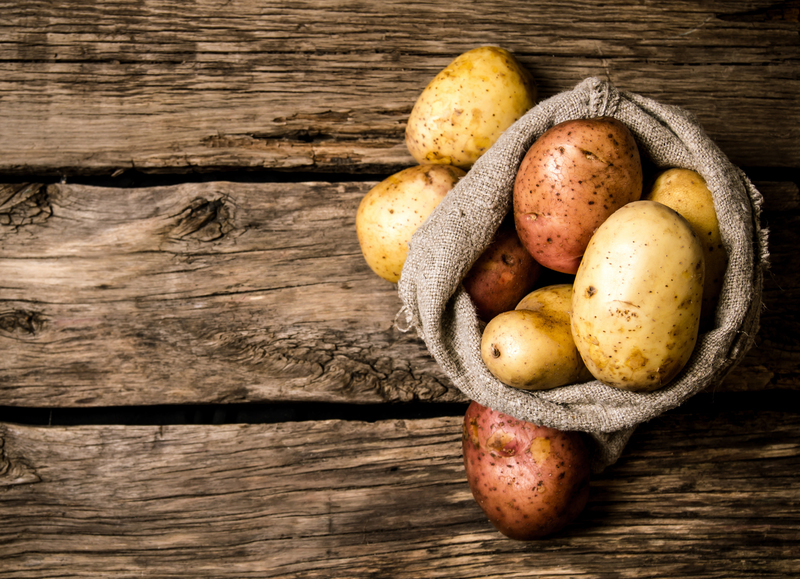From Buds to Bark: Navigating Gardening Ventures with Dogs
Posted on 15/09/2025
From Buds to Bark: Navigating Gardening Ventures with Dogs
Combining the joys of gardening with the company of dogs is a rewarding experience. However, creating a harmonious balance between dog-friendly gardening and a thriving landscape requires thoughtful planning, knowledge, and a touch of creativity. This comprehensive guide explores navigating gardening with dogs, ensuring your canine companions and cherished plants flourish side by side.
The Intersection of Gardening and Dog Ownership
Gardening with dogs brings many benefits and challenges. On one hand, your pets enjoy the outdoors and offer companionship during hours of planting and pruning. On the other, exuberant paws, digging, and curious snouts can spell disaster for budding shrubs and delicate flowers.
Understanding both plant health and canine behavior is vital in designing a safe and enjoyable garden for dogs and humans alike. This article delves deep into strategies and insights for seamless integration.

Assessing Your Dog's Gardening Habits
Not all dogs interact with gardens the same way. Before embarking on your gardening journey, observe your pet's personality and preferences. Ask yourself:
- Does your dog dig or chew plants?
- Are there areas of the yard your dog prefers?
- How does your dog react to new features, such as mulch or planters?
- Does your dog have allergies or sensitivities?
This assessment helps guide the design and plant choices for your garden.
Common Gardening Challenges Dog Owners Face
Dog owners frequently encounter the following challenges when tending to gardens:
- Digging up flowerbeds or newly planted seedlings
- Chemical exposure from fertilizers and pesticides
- Trampling delicate plants while running or playing
- Chewing toxic plants or mulch
- Marking territory on shrubs or lawn ornaments
With an understanding of these hurdles, let's explore practical solutions and proactive steps.
Designing a Dog-Friendly Garden
Creating a harmonious outdoor space doesn't mean sacrificing beauty or utility. Instead, it invites a different approach to design. Consider the following elements as you plan your gardening venture with dogs:
1. Paths and Zones
- Designate Walking Paths: Dogs love to patrol. Set up obvious paths using stepping stones, gravel, or mulch where your dog likes to walk. This helps establish boundaries and deters random wandering into beds.
- Rest and Play Zones: Set aside areas with soft grass or shade for your pet to relax. Placing toys or water bowls here encourages your dog to use these zones more often.
- Digging Pits: Place a designated sand or soil pit where your dog can dig freely--teach them it's their spot for indulgent play.
2. Protective Barriers
- Borders and Fencing: Low fences, latticework, or bushy borders can discourage dogs from trampling tender plants. Use sturdy materials that blend with your garden design.
- Raised Beds and Containers: Elevate your most delicate or edible plants above a curious dog's reach. Raised beds also make for easier care and attractive layout options.
- Natural Barriers: Hedges, densely planted shrubs, or even decorative rocks can subtly redirect dog traffic.
3. Safe and Stimulating Features
- Paths to Explore: Dogs thrive on stimulation. Curved paths, hidden corners, and new scents can keep them engaged.
- Water Features: A shallow pond, splash pad, or pet-safe fountain adds interest and helps cool your dog in summer months.
- Shade Structures: Pergolas, trees, and arbors provide essential cool spots, particularly for breeds prone to overheating.
Dog-Safe Plant Choices
Careful plant selection is crucial in a pet-friendly garden. Numerous common garden plants are toxic to canines if chewed or ingested. Here's how to keep your furry friend safe:
Plants to Avoid
- Oleander
- Azalea
- Daffodil
- Lily of the Valley
- Foxglove
- Tulip bulbs
- Autumn Crocus
Always verify the safety of any plant before introducing it to your garden. Consult lists from reputable sources such as the ASPCA or your local extension office.
Dog-Friendly Alternatives
- Marigolds - Natural pest repellant, nontoxic
- Sunflowers - Cheery and sturdy
- Snapdragons - Non-toxic and colorful
- Camellias - Safe and attractive shrubs
- Basil, Sage, Rosemary - Edible, pet-safe herbs
- Lamb's Ear - Soft, tactile, and harmless
Opt for robust, resilient plants that can withstand the occasional romp.
Materials and Mulches: Safety First
Some common gardening materials can inadvertently harm your dog. Follow these best practices:
- Avoid Cocoa Mulch: Contains theobromine, which is toxic to dogs even in small quantities.
- Opt for Pine, Cedar, or Straw: These mulch types are generally non-toxic, yet still discourage weeds and conserve moisture.
- Secure Loose Gravel: Small stones can be a choking hazard if your puppy likes to chew or swallow objects. Choose smooth pebbles or larger river rocks instead.
- Check Fencing Material: Ensure fences and barriers have no sharp edges or small gaps that could injure or trap your dog.
Garden Care Products: Keeping Chemicals at Bay
Conventional garden care products--fertilizers, pesticides, herbicides--often contain compounds unsafe for pets. Here's how to minimize risk:
- Choose Organic or Pet-Safe Products: Look for labels that indicate pet safety, or consult your garden center for natural alternatives.
- Apply During Downtime: Only use chemicals when you can keep your dog out of the treated area for the recommended period.
- Store Securely: Keep all products out of reach in locked or elevated areas.
If you suspect your dog has ingested or come in contact with garden chemicals, immediately call your veterinarian or local poison control center.
Maintaining a Healthy Lawn with Dogs
Lawns are playgrounds for people and pets alike. However, dog urine can cause yellow patches, and excessive foot traffic leads to compacted soil. Here are expert tips to keep your lawn green and lush:
- Choose Durable Grass Varieties: Ryegrass, fescue, and Kentucky bluegrass hold up better to heavy use.
- Water Deeply and Regularly: This helps dilute urine and prevents burn marks.
- Set Up Toilet Areas: Encourage your dog to relieve themselves in a specific spot by guiding them and offering treats. Cover this area with pea gravel or mulch for easy cleaning.
- Overseed Bare Spots: Regularly reseed areas showing wear to maintain coverage.
Training Tips for Canine Gardeners
Training is a powerful tool for preserving your plants and making safe outdoor play possible.
Teach Boundaries
- Use Commands: Teach "leave it," "off," and "stay" around off-limits garden zones.
- Positive Reinforcement: Reward your dog for respecting barriers and paths.
- Supervised Exploration: When introducing new features or plants, accompany your dog and redirect curiosity as needed.
Discourage Digging in Forbidden Spots
- Redirect to Dig Pits: Encourage digging in the designated area and praise good behavior.
- Deterring Tactics: Lay chicken wire just beneath the soil in vulnerable beds or use natural deterrents like citrus peels.
Monitor Chewing and Eating Plants
- Provide Chew Toys: Satisfy chewing urges with safe toys, particularly for puppies.
- Block Access Temporarily: Use plant cages or barriers while your dog learns the rules.
Gardening Benefits for Dogs and Owners Alike
When planned carefully, gardening with dogs brings health and happiness to every member of your household:
- Physical Activity: Both owner and pet get exercise, essential for well-being.
- Mental Stimulation: New smells, textures, and sights engage dog senses and prevent boredom.
- Bonding Time: Tending a garden together fosters companionship and trust.
- Stress Reduction: Studies show nature's calming effects for humans and pets.
Incorporating Dog-Centric Features
- Obstacle Courses: Create agility paths using low hurdles or tunnels from garden arches.
- Scent Gardens: Plant dog-safe herbs like mint, basil, and lavender for engaging sniffing zones.
- Compost Bins: Keep bins dog-proof and well-shielded to prevent scavenging.
- Wildlife Attractions: Bird feeders and insect hotels add interest--but be sure they are safely out of reach if your dog is a natural hunter.
Year-Round Considerations in a Dog Garden
Different seasons call for shifting strategies:
- Spring: Protect emerging bulbs and seedlings with mesh or temporary fencing.
- Summer: Ensure abundant shade and water. Watch for heatstroke in long-haired or brachycephalic (short-nosed) breeds.
- Fall: Rake leaves promptly--some are toxic. Prevent mold buildup in damp weather.
- Winter: Use pet-safe ice melts, and cover sensitive plants to keep your dog from digging or chewing them.
Garden Safety Checklist for Dog Owners
- Review all plantings for potential toxicity
- Secure all fences and gates
- Store tools, fertilizers, and chemicals safely
- Check regularly for hazards such as sharp sticks, broken pots, or loose mulch
- Maintain up-to-date identification for your dog in case of escapes

Frequently Asked Questions about Gardening with Dogs
Q1: What are some dog-friendly ground covers?
Consider clover, creeping thyme, or buffalo grass. They are more resilient than regular lawn grass and often require less water and maintenance.
Q2: Can dogs and vegetable gardens coexist?
Yes! Use raised beds or sturdy wire fencing to keep dogs out of edibles. Choose vegetables that are non-toxic, such as carrots and green beans, in case your pet sneaks a taste.
Q3: My dog loves to eat grass. Should I worry?
Eating grass in moderation is normal. However, ensure the grass is free of chemicals and not mixed with toxic plants or mulches.
Q4: How do I repair dog-damaged gardens?
Reseed bare lawns, replace trampled plants with hardier choices, and reinforce barriers. Consistent training will also reduce recurrence.
Conclusion: Cultivating Harmony from Buds to Bark
Successfully navigating gardening ventures with dogs is entirely possible with a blend of smart planning, safe plant choices, durable materials, and consistent positive training. Whether you have a tiny city yard or a sprawling country garden, the happiest gardens are those where dogs and humans can dig, play, and bloom together.
Embrace the journey--from the first budding shoot to the cheerful bark in the breeze--and create an outdoor oasis that's as joyful for wagging tails as it is for green thumbs. Your efforts will be rewarded with a garden that's truly gone to the dogs-- and that's a very good thing.

